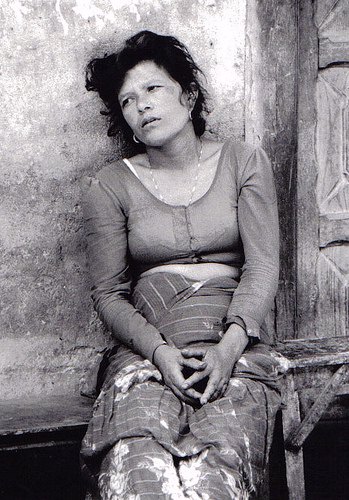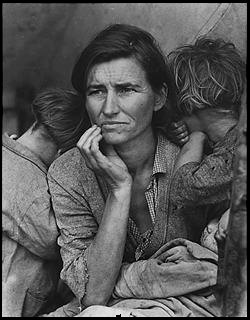 |
|||||
|
Open Letter to Anti-Abortionists
Dear Anti-Abortionists:You don't like us pro-choice feminists, and quite a few of us don't care for you, but here's an idea for you. Get rid of poverty first. Poverty amongst women is the top reason to have an abortion. Solve poverty in America and abortions won't really be necessary. It really is that simple. Since 1981 abortion rates in the United States have dropped 33% from 29.3 (per 1000 women) to 19.4 in 2005. The most dramatic % drop is between 1990 and 1995 during which abortion rates dropped 20%. This shows a direct correlation between the economic recession of the 1980s and the economic boom of the 1990s. Still not sure? According to the American CDC:
Planned ParenthoodIn January 2007 Erica Fricke (vice president of public affairs for Planned Parenthood in Western Pennsylvania) gave a lecture on the strong relationship between abortion and poverty at an event sponsored by the University of Pittsburgh Women's Studies program. "For me, reproductive rights have always been about women existing as more than agents of reproduction, transcending their role as mothers, but I realized as I have spoken with clients that this kind of empowered thinking is rarely a factor for those who choose to terminate a pregnancy." - Erica Fricke. Instead, according to statistics provided by Physicians for Reproductive Choice and Health, 74 percent of women cited "concern for/responsibility to other individuals" as a major factor in their decision to have an abortion. "Working at Planned Parenthood, I see protestors outside three out of five days, and I've learned that the rhetoric of the other side is sort of a woman-vs.-baby mentality," Fricke said. "This is not an anti-mother action or mentality. It's very much pro-mother." It was this discovery about women's motives for terminating pregnancies that led the PRCH and others to break down abortion statistics and consider them less for the trends of the aggregate population and more on a basis of trends within socioeconomic levels. "A lot of people have said, 'I can barely manage the kids I have,' or 'I can't work when I'm pregnant, and I need the money to support them,'" Fricke said. "There's no wrong reason for terminating a pregnancy, but the stereotypical woman climbing over babies and colleagues to get to the top is not who we're serving."
The overall rate of abortions has been declining over the past decade, but Fricke points out that such statistics can be misleading because they overlook what is happening to smaller groups within the population. "Unintended pregnancy has decreased by 20 percent for wealthy women and increased by almost 30 percent for those at significantly lower levels of income," Fricke said. She cites this finding as evidence of inadequate insurance coverage for contraceptives, which allows wealthier women to use more effective forms of birth control like the Nuva Ring or the IUD (Intra Uterine Device), while those of lower income resort to less effective but cheaper methods. "The Pill and condoms have the lowest efficacy rate for all contraceptives," Fricke said. Women who don't use birth control because they can't afford it constitute a significant percentage of terminated pregnancies, she added. According to the PRCH's findings, 49 of 1000 black women, 33 of 1000 Hispanic women and 13 of 1000 white women get abortions every year. "I want to be clear that this doesn't say anything about racial differences, but that we've found that the financial demographics are the reason for this," Fricke said. "Eleven percent of the people not using birth control make up half of all unintended pregnancies, and 42 percent of those ends up terminating their pregnancies," she said.
Fricke stressed that what she believes can and should be done to decrease the abortion rate across the board would be to expand insurance coverage for both contraceptives and abortions. Under current insurance terms, Fricke said women cannot receive money for abortions in Pennsylvania because pregnancy is considered a pre-existing condition to which insurance does not apply. The Prevention First Act, recently introduced by Sen. Harry Reid (D-Nevada), moves to "require health insurance plans to cover contraceptive services and supplies to the same extent that they cover other prescription drugs." Fricke said she feels that such legislative action would be a step in the right direction, but not necessarily a solution to the problem. "The key issue for me, and I speak for me and not Planned Parenthood, is that I think a language of empowerment [for women] is wonderful, but I don't think it has anything to do with what we're doing," Fricke said. "Our clients don't think about that, they don't feel like they're making a choice." When you're poor and working two or three jobs just to put food on the table the last thing you need is to lose your job and have another mouth to feed. This isn't about corporate risers. This is about regular women, poor women, who just want what is best for their children. So if poverty is the major reason for women having abortions why not get rid of poverty first? Raise the minimum wage, increase educational funding, start your own business and hire lots of women. 52% of American women will have an abortion during their lifetime. We agree that is very high, but so is America's poverty and unemployment rates amongst women.
Sincerely,
|
|
||||
|
|
|||||
|
|
|||||
 |
|
 |
|||


